 As many of you know, my wine drinking experiences started at the (illegal) age of 18 as a bright eyed, scrubbed face kid hanging out in my newly found, artsy home in the East Village in New York City. I was lucky enough to spend time with many Europeans who were happy to share their heritage and family memories with the likes of a lonely, lost American girl such as myself. We first explored the wines of Italy, then France, with Spain thrown in here and there… but Italian wines seemed to always find their way into most of our gatherings. When winter would near, there was always a question as to which wines would be special for the holidays, as well as satisfying enough to get us through the bleak months of January and February here in the Northern Hemisphere… the answer I was given was one word: Amarone.
As many of you know, my wine drinking experiences started at the (illegal) age of 18 as a bright eyed, scrubbed face kid hanging out in my newly found, artsy home in the East Village in New York City. I was lucky enough to spend time with many Europeans who were happy to share their heritage and family memories with the likes of a lonely, lost American girl such as myself. We first explored the wines of Italy, then France, with Spain thrown in here and there… but Italian wines seemed to always find their way into most of our gatherings. When winter would near, there was always a question as to which wines would be special for the holidays, as well as satisfying enough to get us through the bleak months of January and February here in the Northern Hemisphere… the answer I was given was one word: Amarone.
My first encounter with Amarone was over 20 years ago, the winter of 1993-94, so it’s difficult to remember specific details… it seems fuzzy except for my immediate exclamation of dislike because it reminded me of raisins (it’s a wine made, in part, from dried grapes) and it was too big and bold of a libation. An Austrian friend who had an Italian mother insisted that I needed to try it again… slowly smell it, take time to sip it, sit with the glass and allow myself to see the depth and complexity of this special wine called the “King of Valpolicella”. This is the way his maternal grandparents taught him to drink Amarone. I sighed at his insistence since I felt I was being pushed past my comfort zone but I wanted to open myself up to as many experiences as I could, so I tasted the wine again… I tried to smell it, taste it, allow the aromas to fill my head, but again, all I got was raisins, and it was making me very uncomfortable spending so much time with one wine… I immediately placed the glass away from me after my first taste and pronounced that it was not a wine for me.
Valpolicella
I have had over two decades to give Amarone another try… but until recently I spent very little time exploring the wines. I would think to myself that it was a drink for more “traditional” wine drinkers and it was not something a wine thrill-seeker like myself would be interested in … yes, I had tasted Amarone a handful of times during my wine career but it was always during a time when I had to taste 50 wines in one sitting at a trade tasting… and so you blast through the wines, a lot of times having to use your previous knowledge and experience to “pre-assess” them. In my mind, Amarone was a seemingly dry, heavy red wine that only sang of intense, desiccated fruit.
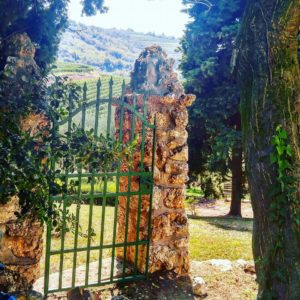 In September of 2016, I was given the opportunity to go to Valpolicella to try the DOC wines in the area which included Amarone – now a DOCG wine. I had been in Verona earlier that year for Vinitaly, which is in the same region as Valpolicella, and while there in North East Italy, I ran into many colleagues that talked about the stunning landscape of the land that made Amarone. And so, although I don’t like to take too many wine press trips a year (as a writer who already works 6 days a week it can be pretty taxing on the mind and body to do these trips) I felt that Valpolicella needed to be part of the handful of wine visits I would take that year.
In September of 2016, I was given the opportunity to go to Valpolicella to try the DOC wines in the area which included Amarone – now a DOCG wine. I had been in Verona earlier that year for Vinitaly, which is in the same region as Valpolicella, and while there in North East Italy, I ran into many colleagues that talked about the stunning landscape of the land that made Amarone. And so, although I don’t like to take too many wine press trips a year (as a writer who already works 6 days a week it can be pretty taxing on the mind and body to do these trips) I felt that Valpolicella needed to be part of the handful of wine visits I would take that year.
I must admit that I was mainly looking forward to drinking the Ripasso wines, which use the skins from the dried Amarone grapes to add complexity as they are not as robust, and I was stressed out about being too overwhelmed by the larger-than-life Amarones. At the outset, I was sure that my destined Amarone re-encounter was doomed as a heat wave hit Valpolicella during our time there… other media people and I deemed it the #SummerOfAmarone because we spent most of our time feeling like we were trapped in a large sauna which is not typical September weather in an area that has temperatures moderated by the majestic Lake Garda.
But just like my long-ago-Austrian-friend-with-the-Italian-grandparents had advised about simply giving myself time to see what is there, it started to happen. While tasting several Amarones over 16 winery visits, these wines started to reveal the glorious mosaic of flavors – from sage to tobacco to black cherry to spices that were bright and lifted on the finish … I found that I did not have too much Amarone, actually I couldn’t get enough! And they were all different – some with more fresh fruit, others dried, some textured, others lush, but the best all had in common the ability to make time stop because of their multitude of complexity… they took all of my attention and I was happy to give it to them… everything around me faded out as if I changed a setting on a camera.
Amarone
Since that time I have enjoyed buying Amarone myself as a tool to help me into a wine meditation. When it is time to step out of the grind, and yes, there is a grind with writing and working with wine, I would have my glass of Amarone and just allow myself to be taken away.
 It was interesting to recently attend an Amarone Seminar, tasting from the 2003-2010 vintages, in my new altered state with regards to this wine. The seminar was led by Andrea Sartori, the new President of the Consorzio Tutela Vini Valpolicella, as well as President and great-grandson of one of the most well-known Amarone producers Sartori; and New York City Sommelier, Michelle Erland, who heads a wine list that includes many Amarone wines at Giovanni Rana Pastificio & Cucina Restaurant.
It was interesting to recently attend an Amarone Seminar, tasting from the 2003-2010 vintages, in my new altered state with regards to this wine. The seminar was led by Andrea Sartori, the new President of the Consorzio Tutela Vini Valpolicella, as well as President and great-grandson of one of the most well-known Amarone producers Sartori; and New York City Sommelier, Michelle Erland, who heads a wine list that includes many Amarone wines at Giovanni Rana Pastificio & Cucina Restaurant.
 Andrea took us through the improvements that Valpolicella producers have implemented over the years: organically minded vineyards, hygienic practices in the winery, and putting forth more experimentation for refining the appassimento process (drying the grapes) which is key for Amarone. Some of you may know that Amarone, such as the other wines in Valpolicella, are a blend of red grape varieties, but through University research they are realizing that the Corvina variety is the best for the drying process, and therefore, the best for this super star wine.
Andrea took us through the improvements that Valpolicella producers have implemented over the years: organically minded vineyards, hygienic practices in the winery, and putting forth more experimentation for refining the appassimento process (drying the grapes) which is key for Amarone. Some of you may know that Amarone, such as the other wines in Valpolicella, are a blend of red grape varieties, but through University research they are realizing that the Corvina variety is the best for the drying process, and therefore, the best for this super star wine.
It was noted many times how there has been a shift of focus for Valpolicella producers to find a balance with freshness as well as expressing transparency with fruit and terroir (sense of place). Michelle said, that as a sommelier, Amarone was a great wine to transition California wine drinkers to Italian wines as they did not disappoint such customers with their weighty body. Amarone’s recent focus on making sure to express more pristine aspects of the wines, giving an overall lift, made these Veronese show stoppers more appealing when pairing them with food.
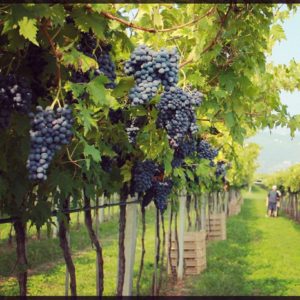 Andrea Sartori furthered this discussion by confirming there is a new focus to improve the aspects of Amarone that caused imbalances in some vintages while recognizing that in some ways, their grandparents did get it right. One of the fairytale facets of the Valpolicella wine area, besides the enchanting hills, is the Pergola trellising system for the vines. This whimsical system lifts the vines high off the ground so an open canopy of its leaves can shade the grapes. It was first recorded as existing in the area during the sixth century, since trees were used as supports for grape vines leading to the eventual devising of this practice. It is extremely time consuming and costly and so another, more popular, trellising practice – Guyot – was being heralded by the famous Valpolicella producer Masi to take over Valpolicella. But shockingly, Amarone’s favorite grape Corvina, with its thick skins, showed in recent University studies to suffer from sunburn when not placed in the Pergola trellising system – causing tougher tannins and overripe grapes. The current 25% of Guyot planted vines are expected to be replanted again in Pergola trellises matching the rest of the Valpolicella DOC designated vineyards. In this instance, Andrea admitted, their grandparents had made a better choice.
Andrea Sartori furthered this discussion by confirming there is a new focus to improve the aspects of Amarone that caused imbalances in some vintages while recognizing that in some ways, their grandparents did get it right. One of the fairytale facets of the Valpolicella wine area, besides the enchanting hills, is the Pergola trellising system for the vines. This whimsical system lifts the vines high off the ground so an open canopy of its leaves can shade the grapes. It was first recorded as existing in the area during the sixth century, since trees were used as supports for grape vines leading to the eventual devising of this practice. It is extremely time consuming and costly and so another, more popular, trellising practice – Guyot – was being heralded by the famous Valpolicella producer Masi to take over Valpolicella. But shockingly, Amarone’s favorite grape Corvina, with its thick skins, showed in recent University studies to suffer from sunburn when not placed in the Pergola trellising system – causing tougher tannins and overripe grapes. The current 25% of Guyot planted vines are expected to be replanted again in Pergola trellises matching the rest of the Valpolicella DOC designated vineyards. In this instance, Andrea admitted, their grandparents had made a better choice.
Being in the Right State of Mind
It makes me laugh to myself how adverse to Amarone I used to be since it is a wine that gives so much in terms of complexity and textural pleasure – two traits that I treasure in wines. When I was blissfully drinking it morning, noon and night during my Valpolicella heat-spell infused trip, it was proof that there was never anything wrong with the wine, but maybe it took me a while to get to the right place in my mind to be able to appreciate it. Amarone is a wine that demands the drinker to sit, quieting him/herself to truly know all the secrets it wants to share. I think, even more than its weight, Amarone’s quality to make the drinker reflect while drinking it makes it ideal for shorter days that are filled with longer stretches of darkness, such as the winter months. Yet I do have to admit to drinking Amarone over the past summer when I felt that I needed to take time to go into the abyss of my own being.
When I first experienced Amarone, I certainly was not comfortable sitting still in my own mind, and it took a long time to get past all of my issues and the chatter of years and years of wine professional gossip and tastings to finally really taste Amarone… I had to eventually go all the way to Valpolicella so I could finally get into a comfortable state within my own mind so I could really appreciate this wine… and to realize that my friend’s grandparents, all those years ago, knew better… they knew how to drink Amarone.
***First & last photo in this post is credited to Consorzio Tutela Vini Valpolicella
*************************************************
Amarone della Valpolicella Vertical Tasted on October 23rd, 2017
Amarone della Valpolicella was elevated to DOCG (the highest wine designation in Italy) in 2010 and so all vintages prior to 2010 are only given DOC status.
 –2010 Sartori di Verona, Amarone della Valpolicella DOCG, Classico “Corte Brà”: 50% Corvina, 30% Corvinone, 15% Rondinella and 5% Oseleta. The Corte Brà vineyard is in the northern hills of Verona. Fresh blackberry with tar and dried thyme with a nimble body that gives an overall elegance to this wine. I have drunk a lot of Sartori Amarone wines and they seem to always find the balance between power and finesse.
–2010 Sartori di Verona, Amarone della Valpolicella DOCG, Classico “Corte Brà”: 50% Corvina, 30% Corvinone, 15% Rondinella and 5% Oseleta. The Corte Brà vineyard is in the northern hills of Verona. Fresh blackberry with tar and dried thyme with a nimble body that gives an overall elegance to this wine. I have drunk a lot of Sartori Amarone wines and they seem to always find the balance between power and finesse.
 -2009 Cantina Valpantena Verona, Amarone della Valpolicella DOC, Torre del Falasco: 60% Corvina, 30% Rondinella and 10% Corvinone. Another brighter and more finessed style, with exotic spice and red fruit in this case… again the body is livelier than traditionally one would think of Amarone and the tannins have a lovely velvety quality.
-2009 Cantina Valpantena Verona, Amarone della Valpolicella DOC, Torre del Falasco: 60% Corvina, 30% Rondinella and 10% Corvinone. Another brighter and more finessed style, with exotic spice and red fruit in this case… again the body is livelier than traditionally one would think of Amarone and the tannins have a lovely velvety quality.
 -2009 Massimago, Amarone della Valpolicella DOC: 70% Corvina, 15% Corvinone and 15% Rondinella. Massimago is a new winery in Valpolicella from a first generation woman, Camilla Rossi Chauvenet. I loved visiting Camilla during my press trip and found her enthusiasm and desire to be playful with these wines refreshing and exciting. I was so happy to see her recently in New York City at the Amarone seminar since she is becoming one of my favorite producers in the area. Although the wine has everything one wants in an Amarone – rich flavors of licorice and ripe fruit balanced by lifting notes of mint and good acidity – there is an underlying wild quality that really makes this wine a stand out.
-2009 Massimago, Amarone della Valpolicella DOC: 70% Corvina, 15% Corvinone and 15% Rondinella. Massimago is a new winery in Valpolicella from a first generation woman, Camilla Rossi Chauvenet. I loved visiting Camilla during my press trip and found her enthusiasm and desire to be playful with these wines refreshing and exciting. I was so happy to see her recently in New York City at the Amarone seminar since she is becoming one of my favorite producers in the area. Although the wine has everything one wants in an Amarone – rich flavors of licorice and ripe fruit balanced by lifting notes of mint and good acidity – there is an underlying wild quality that really makes this wine a stand out.
 -2008 Cantina Valpolicella Negrar, Amarone della Valpolicella DOC Classico, Domini Veneti “Vigneti di Jago”: 60% Corvina, 15% Corvinone, 15% Rondinella and the rest of the 10% are a mixture of auxiliary varieties that are allowed. The zone of Jago has always been valued for its ability to produce structured high quality wines. This 2008 is big and broad with its structure yet luminous with its aromatics of cherry blossom and cloves. A warming wine that is satisfyingly robust; through time it opens on the finish with cinnamon and balsamic drizzled herbs.
-2008 Cantina Valpolicella Negrar, Amarone della Valpolicella DOC Classico, Domini Veneti “Vigneti di Jago”: 60% Corvina, 15% Corvinone, 15% Rondinella and the rest of the 10% are a mixture of auxiliary varieties that are allowed. The zone of Jago has always been valued for its ability to produce structured high quality wines. This 2008 is big and broad with its structure yet luminous with its aromatics of cherry blossom and cloves. A warming wine that is satisfyingly robust; through time it opens on the finish with cinnamon and balsamic drizzled herbs.
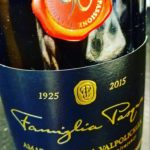 –2006 Pasqua Vigneti E Cantine, Amarone della Valpolicella DOC Riserva, Famiglia Pasqua: 60% Corvina, 25% Rondinella, 10% Oseleta and 5% Corvinone. The 2006 Amarone della Valpolicella Riserva Famiglia Pasqua celebrates the 90th anniversary of this family-run winery (1925-2015). From the hilly terrain of the Valpantena – clay mixed with limestone. I like the firm structure of this wine that allows one to chew into the dark and seductive flavors of dark chocolate and blackberry jam made more engaging by nutmeg and smoldering cedar along the sustained finish.
–2006 Pasqua Vigneti E Cantine, Amarone della Valpolicella DOC Riserva, Famiglia Pasqua: 60% Corvina, 25% Rondinella, 10% Oseleta and 5% Corvinone. The 2006 Amarone della Valpolicella Riserva Famiglia Pasqua celebrates the 90th anniversary of this family-run winery (1925-2015). From the hilly terrain of the Valpantena – clay mixed with limestone. I like the firm structure of this wine that allows one to chew into the dark and seductive flavors of dark chocolate and blackberry jam made more engaging by nutmeg and smoldering cedar along the sustained finish.
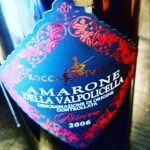 -2006 Rocca Sveva, Amarone della Valpolicella DOC Riserva, Collezione Speciale: A blend of Corvina, Rondinella and Molinara. Riserva Collezione Speciale wines are produced only in exceptional years. This wine became a favorite among a couple of the local sommeliers in the room because of a distinctive green note of capers that they thought would pair well with a variety of dishes. Also, the evolved notes of leather and more complex fruit are ideal for those that appreciate wines with some age on it. The tannins are well-integrated allowing the lush fruit a chance to expand with a delightful succulent finish.
-2006 Rocca Sveva, Amarone della Valpolicella DOC Riserva, Collezione Speciale: A blend of Corvina, Rondinella and Molinara. Riserva Collezione Speciale wines are produced only in exceptional years. This wine became a favorite among a couple of the local sommeliers in the room because of a distinctive green note of capers that they thought would pair well with a variety of dishes. Also, the evolved notes of leather and more complex fruit are ideal for those that appreciate wines with some age on it. The tannins are well-integrated allowing the lush fruit a chance to expand with a delightful succulent finish.
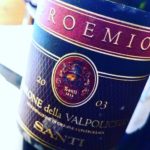 -2003 Santi, Amarone della Valpolicella DOC “Proemio”: 50% Corvino, 30% Corvinone and 20% Rondinella. An impressive effort in a challenging vintage – 2003 will go down as one of the hottest and driest vintages for many European regions. But Santi, with careful attention and strict selection, were able to produce an Amarone that is still alive today. This is the one wine that had intense desiccated fruit in this line up with prunes and dried black cherries, yet it was still able to find balance within its opulence with mint oil and violets… a subtle note of vanilla shows the nice integration of oak aging.
-2003 Santi, Amarone della Valpolicella DOC “Proemio”: 50% Corvino, 30% Corvinone and 20% Rondinella. An impressive effort in a challenging vintage – 2003 will go down as one of the hottest and driest vintages for many European regions. But Santi, with careful attention and strict selection, were able to produce an Amarone that is still alive today. This is the one wine that had intense desiccated fruit in this line up with prunes and dried black cherries, yet it was still able to find balance within its opulence with mint oil and violets… a subtle note of vanilla shows the nice integration of oak aging.










